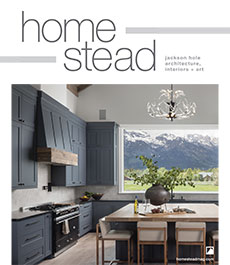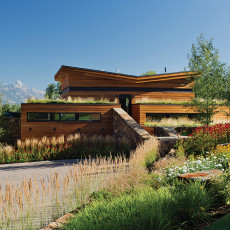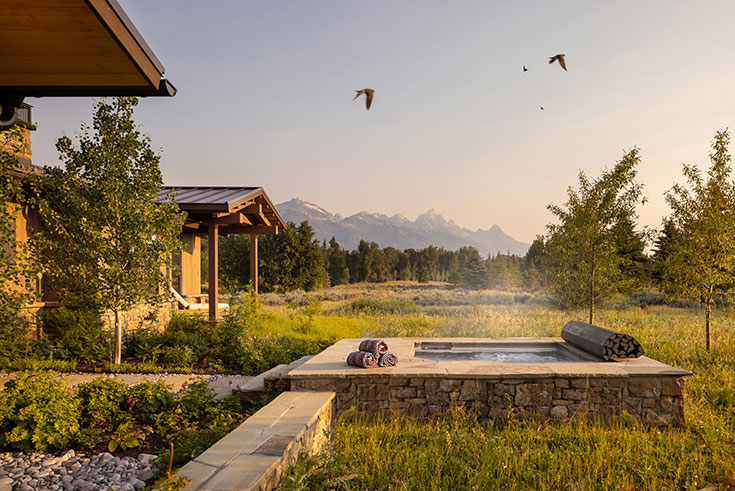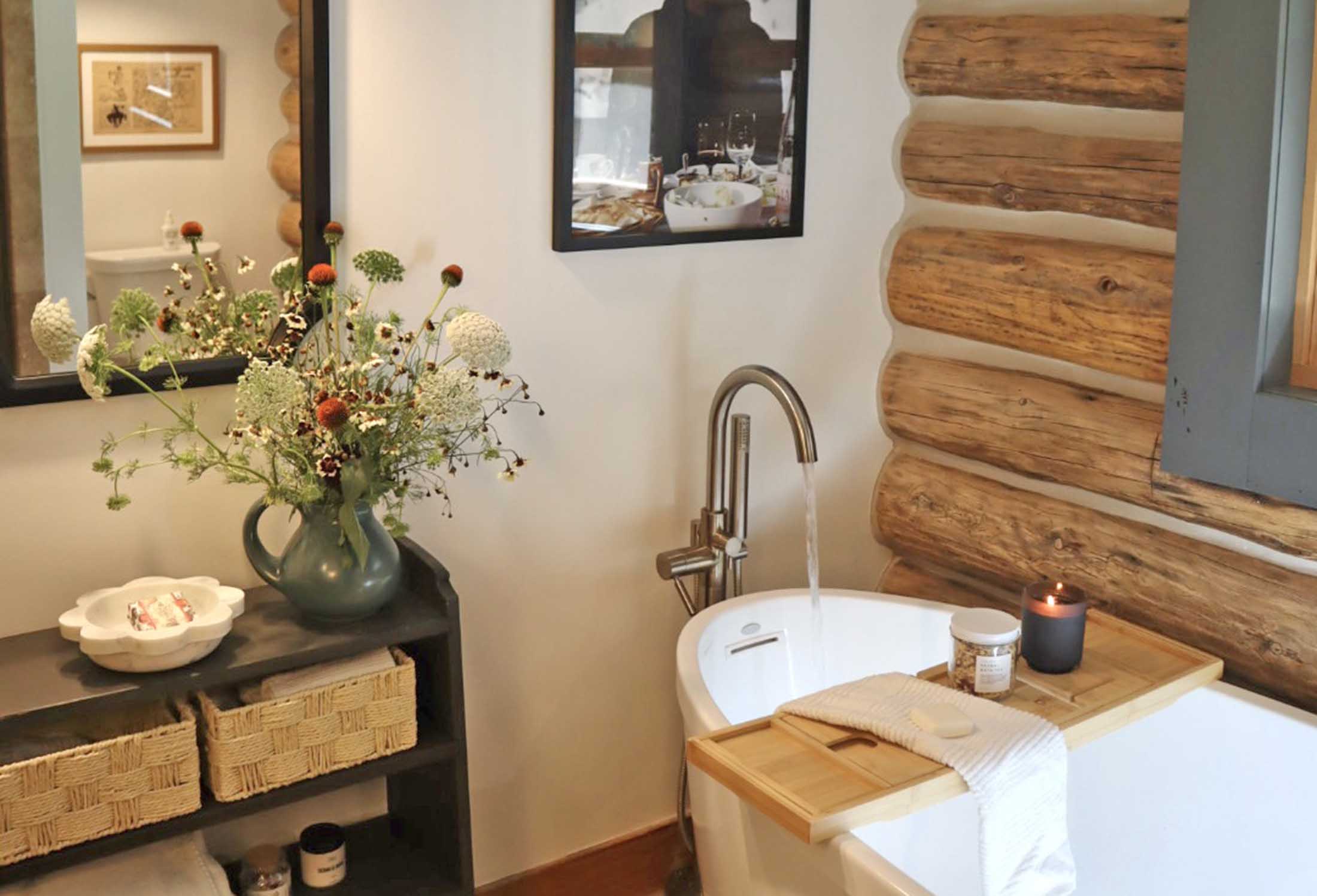Advancements in window technology allow for more glass and smaller frames.

If you think there are more and bigger windows in homes today—in Jackson Hole and beyond—you’re right. “We were having a hard time meeting energy codes in the 1990s,” says Paul Bertelli, principal at JLF Architects, which has offices in Bozeman, Montana, and Jackson Hole. “Especially in Teton County, we couldn’t do things like an entire living room wall of glass because the heat loss was radical. But now, even as energy codes have gotten stricter, we have developments in glass technology and frame and steel and bronze technology that give such improvements in heat loss that we can do whole walls of glass in Teton County.”
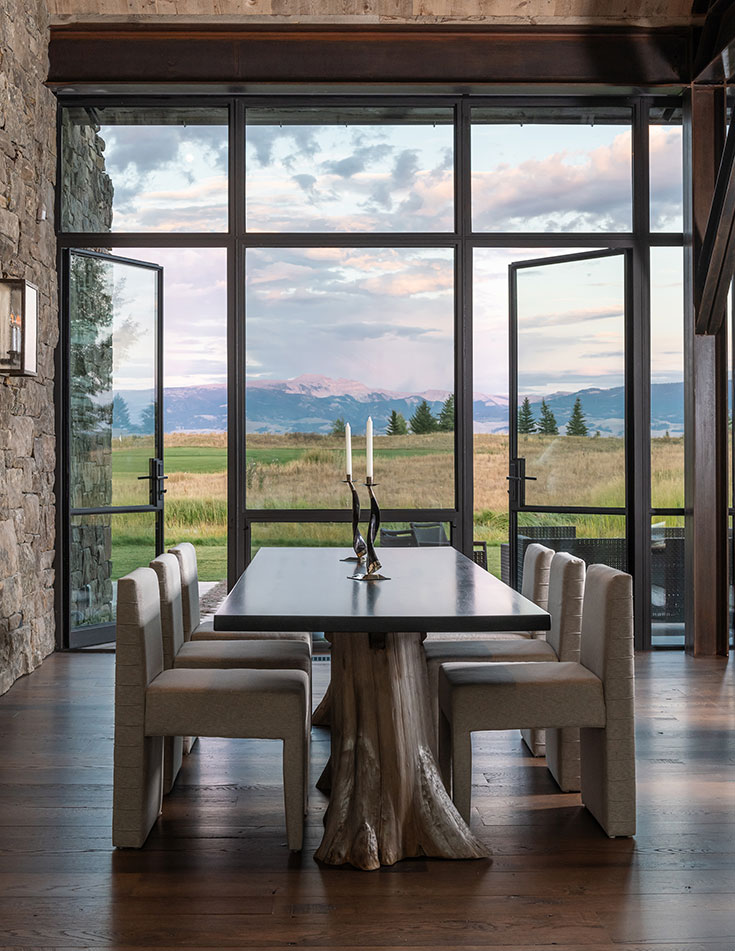
“Windows today have thermal properties that are much more enhanced even than 10 years ago,” says Mitch Blake, a founding principal at Jackson-based Ward | Blake Architects.
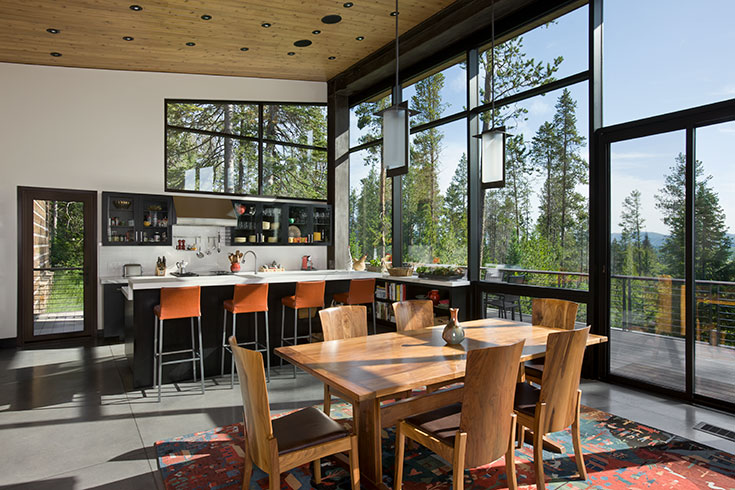
Of course, bigger windows mean more and bigger views, but that’s not all they do. The more glass in a home, the more connected to the outside it feels, which is a good thing. A 2020 article in the American Psychological Association’s Monitor on Psychology reveals that exposure to nature has been linked to many benefits, including improved attention, lower stress, better mood, reduced risk of psychiatric disorders, and even upticks in empathy and cooperation. “Natural light is critical to the quality of spaces in environments like ours with long winters—light is so important,” says JLF Architects’ Bertelli. “The advancements in glass help solve that problem.”
“I think creating glazing that has a higher R value is one of the most significant advancements in buildings in the 21st century.”
—JLF Architects principal Paul Bertelli
Chris Jaubert, founder and principal at A43 Architecture, says his firm is always trying to blur the lines between interior and exterior spaces. “If you live in a place where you’re looking out at neighbors all the time, maybe this kind of home is less appealing. But in Jackson Hole, we’ve shifted from prototypical rustic log structures, which could be described as introverted, to structures that embrace the environment.” Shawn Ankeny, founder and principal at Jackson’s Ankeny Architecture and Design, says, “It’s really cool to be inside surrounded by lots of windows and light and for it to be blustery and cold outside—you feel like you’re in the elements, but you’re protected.”
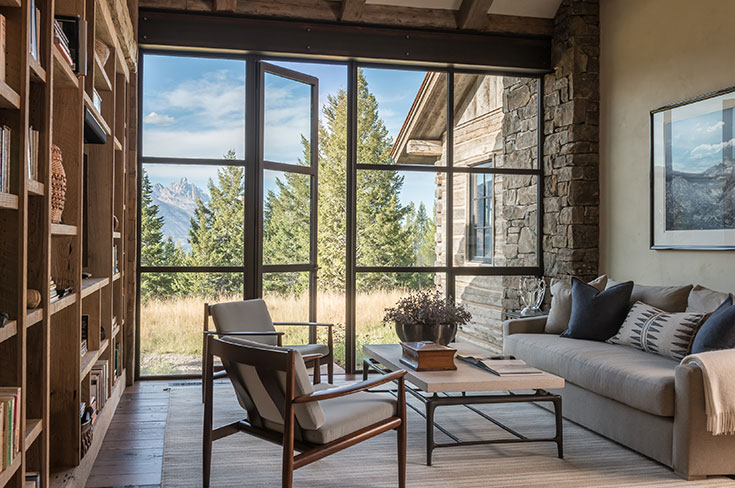
So, what are the advancements that make energy-efficient walls of glass possible? In the 1980s, window manufacturers began inserting a thermal break—whether a polyamide-based material or argon, krypton, or xenon gas—in double-pane windows. (Note: At elevations as high as Jackson Hole’s, gas-filled windows are unsuitable. Most windows are manufactured at elevations below 1,000 feet; when they’re brought up to 6,000 feet, the gas will expand, which can cause structural problems that include pane cracks or shattering, warped frames, broken window seals, and compromised structural integrity.) The impracticability of gas-filled windows at higher elevations was one reason engineers developed low-e (low-emissivity) window coatings. These are usually applied to both sides of double-pane windows and minimize the amount of ultraviolet and infrared light that can pass through the glass.
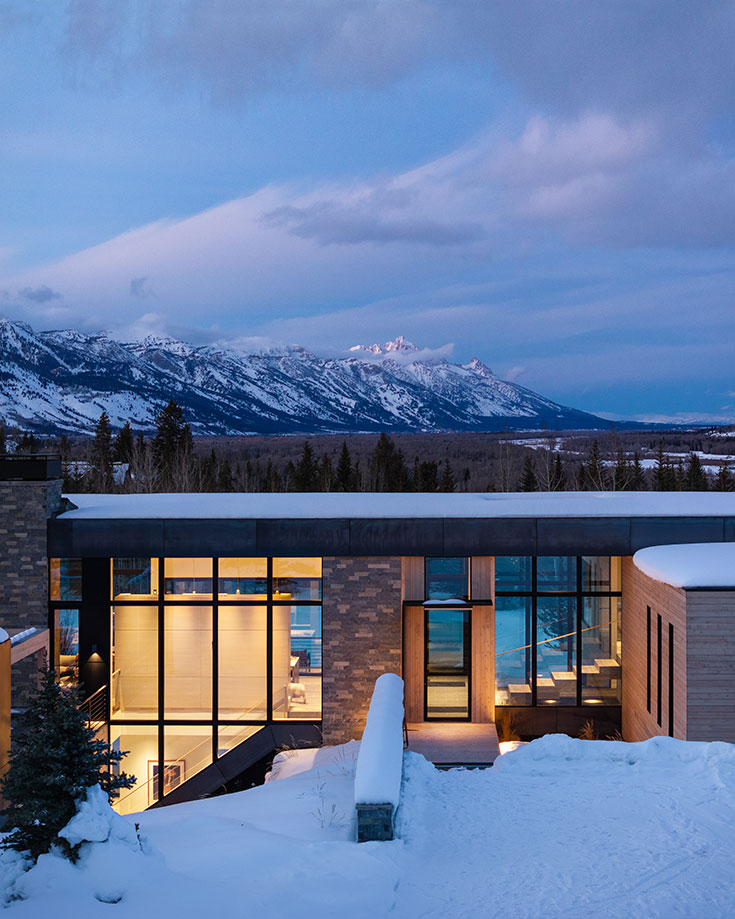
Another improvement came from European window manufacturers, who began making windows out of bronze and steel (wood was the traditional material). “Bronze is one of the most stable and durable materials out there,” Bertelli says. And triple-pane windows, which are even more resistant to heat loss than double-pane windows, also became a thing.
Simultaneously, the installation of windows improved. “It was really hard to seal a window in the past,” Bertelli says. “The process was pretty rudimentary. But now there are great products where you can seal windows with waterproof membranes applied to a building substrate. There have been huge improvements in the weather- and moisture-resistance of actually applying a window to a building. Several things have slowly evolved over time—hinges, locking mechanisms, and weatherstripping are also better now—that, together, have gotten us to where we are now—where it’s extraordinary what you can do with glass windows and doors. It’s unlimited.”
While today’s windows and how they are applied to buildings are more energy efficient, that’s not the only way they have improved.
Aesthetics
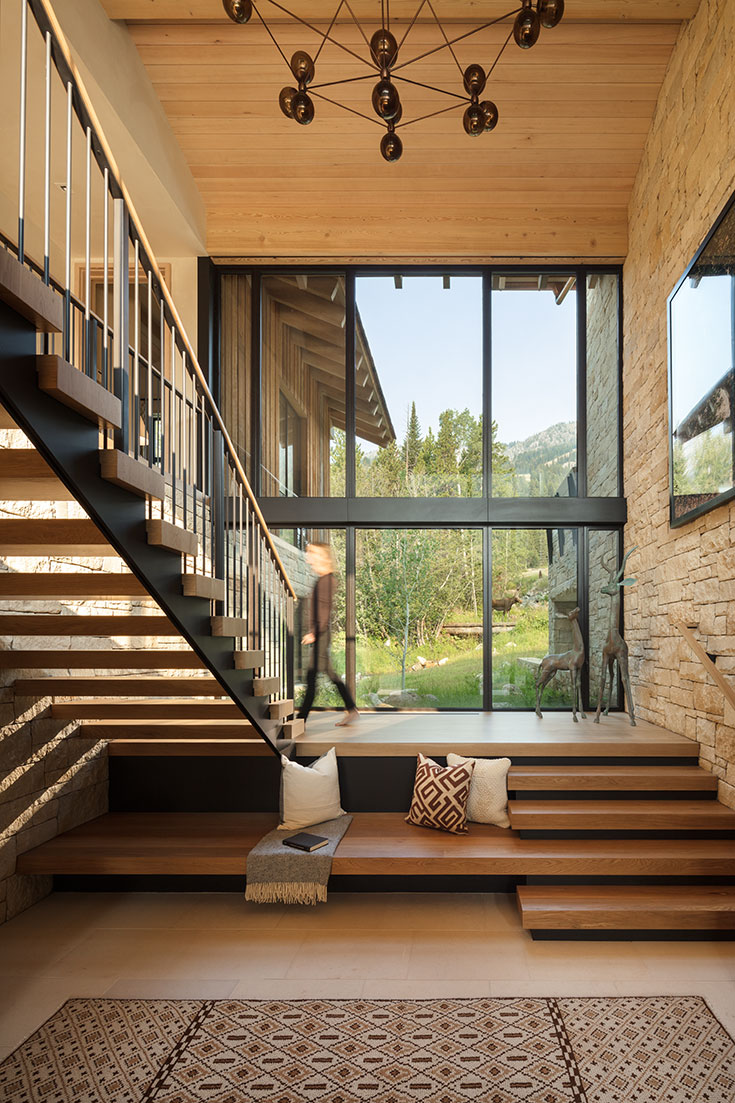
About the walls of windows used in their Ridge at Spring Creek home featured on page 76, Ward | Blake Architects says the visible components are crisp and thin. “We’d done this much glass before, but with beefier components,” founding principal Tom Ward says. “I think this might be the first time we did triple glazing in a super thin frame. The Bauhaus architects were always talking about this expression of glass and mass but didn’t have the technology at hand to do it. It took until now to execute their theories and ideas in the way they envisioned.”
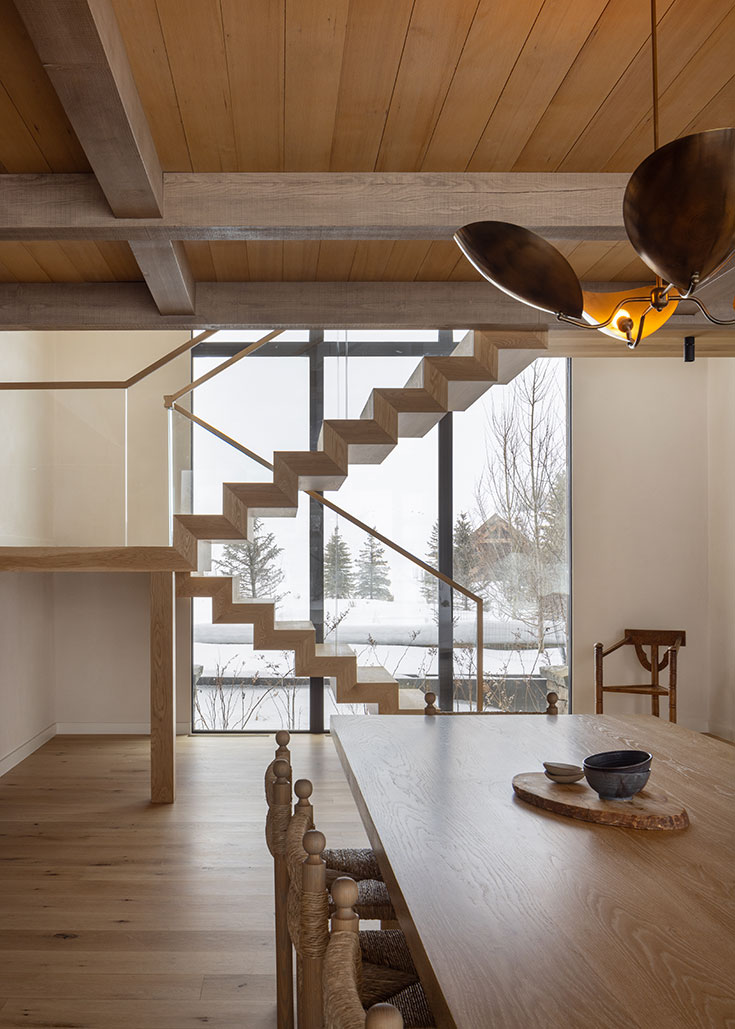
“Now, smaller components can make bigger windows,” Bertelli says. Steel and bronze window frames are strong and stable enough to support large segments of glass, which traditional wood window frames couldn’t do. “Steel and bronze allowed for thin sight lines and durability.” And now engineered wood can do the same. “You don’t have to go to Europe for thin sight lines and durability anymore,” Bertelli says, calling out Wisconsin-based Kolbe’s VistaLuxe Collection, which is made from engineered lumber.
For the Birds
A 2014 Smithsonian study estimated that between 365 million and 988 million birds are killed annually in the U.S. because they fly into windows. As high as this range sounds, a 2024 Audubon Society study published in the journal PLOS ONE revealed that this estimate is likely low. Audubon researchers concluded that collisions with buildings could kill more than 1 billion birds per year in the U.S. alone, making bird-window collisions an even greater factor than was previously thought in the estimated loss of one-quarter of North America’s bird population over the last 50 years. Birds are most likely to crash into windows that reflect the sky or nearby greenery, aka what we see out our windows in Jackson Hole.
Bird-building collisions are not new—they were first documented in the 19th century—but bird-friendly glass is. “The technology to prevent bird strikes has really improved,” Bertelli says. Windows are now available with patterns etched or applied to them. The patterns don’t block human views, but signal to birds that the space is not open. “If you have these windows, when you look through them close up, the patterns really don’t block anything,” Bertelli says. The patterns are usually horizontal or vertical lines or a grid of dots, but Bertelli says they are not obvious.
There are window films that can be applied to existing windows (or to styles of windows that aren’t available with bird-friendly glass) to make them bird-friendly. In Chicago, on the night of October 4, 2023, approximately 1,000 migrating birds fatally collided with McCormick Place’s Lakeside Center. Before the next year’s migration, bird-friendly window film was added to all of that building’s windows. There haven’t been any mass-fatality bird strikes on the building since.
Smart Windows
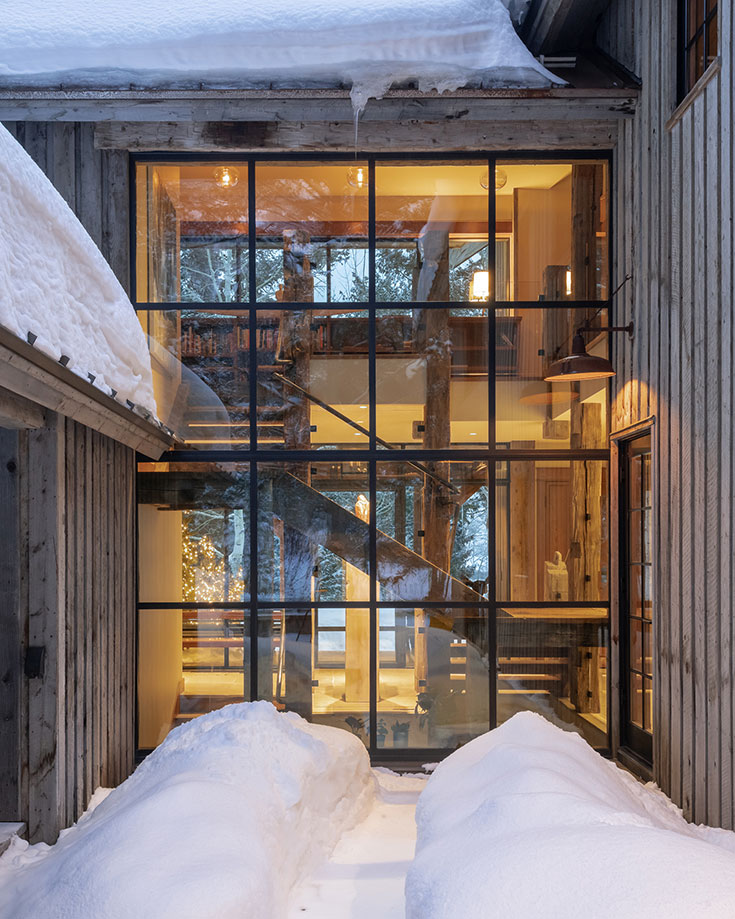
Smart technology seems to be built into everything today—from TVs to cars and refrigerators. Windows are no exception. “There’s dynamic glass and electronic glass and electrochromic glass, and thermochromic and photochromic,” Bertelli says. “These are all ways of changing the transparency or the density of glass to either reduce sun or reduce heat loss. It’s amazing.”
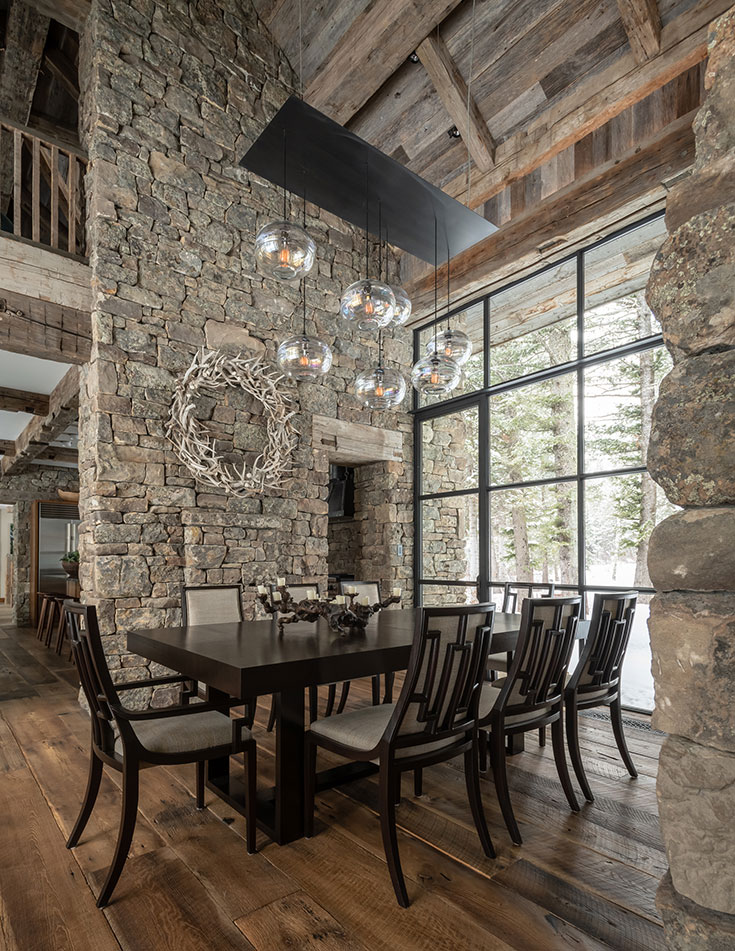
Although it is still in early development, researchers at Michigan State University have created a transparent luminescent solar concentrator that creates solar energy while keeping the window clear. “This isn’t yet developed enough for use, but when it is, it will be a game changer,” Bertelli says. “Imagine a 50-story building producing enough energy to run half of the apartments in it, or a home producing its own energy.”
Electrochromic Windows in Action
Boeing 787 Dreamliners, which are part of the fleets of United Airlines, American Airlines, British Airways, Lufthansa, and Emirates, among others—worldwide there are about 1,200 Dreamliners in service—feature electrochromic windows. Passengers in window seats no longer need to pull down (or raise) a window shade. The electrochromic windows do what’s needed automatically.
At the Washington Monument in Washington D.C., elevators have smart glass sides to allow riders to see the commemorative stones inside the monument.
In Tokyo, Japan, public bathrooms have at least one smart glass wall. If the bathroom is empty, the smart glass is clear and you can see that it’s unoccupied. Once you enter and lock the door, the smart glass becomes opaque.
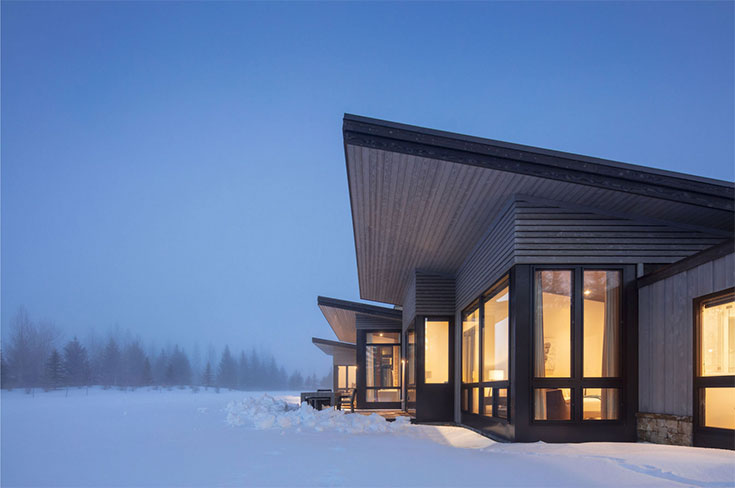
Electrochromic windows are the most widespread smart windows currently in use. Electrochromic glass changes from clear to opaque with the push of a button (that applies an electrical voltage across the glass). These windows can be used to improve energy efficiency and also provide privacy or visibility in a space; electrochromic windows can eliminate the need for blinds or window treatments.
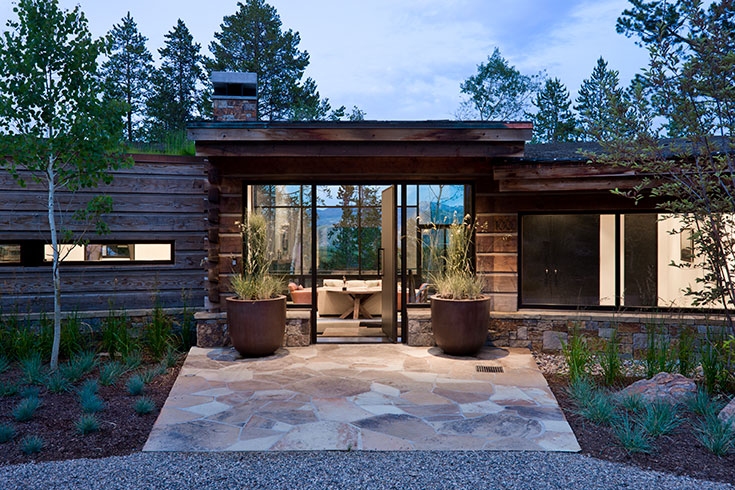
Noise Reduction
A truly soundproof window has not yet been invented, but there are windows that effectively reduce sound. Material and insulation both play a role in reducing (or not) sound, but the glass itself is the biggest determinant of how much sound a window blocks.
Measuring Sound Performance
A common measure of sound performance is Sound Transmission Class (STC). The higher this number, the better a window’s sound absorption.
With windows with an STC rating of 25–30, you can hear and understand a loud conversation happening outside. With windows with an STC between 30 and 35, you might hear that a loud conversation happening outside, but not be able to follow it. If you’ve got windows with an STC between 36 and 40, loud conversation outside sounds like a low hum. An STC between 42 and 45 means that loud voices, and even music, are blocked, minus the bass tones. A 10-inch masonry wall has an STC of 50.
A standard double-pane window has an STC of about 28. Standard triple-pane windows have an STC between 28 and 34. An STC rating of 38–42 is considered good soundproofing for residential windows.
Of course, the thicker the glass, the better it blocks sounds. But the number of panes, each pane’s thickness, the presence of inserts, and the space between panes also make a difference in a window’s ability to dampen noise. Today’s windows are available with acrylic inserts, thicker panes, and with panes of different thicknesses. When one pane is thicker than the other, it is more difficult for sound to travel through a window because the panes will vibrate at different frequencies. (Panes of the same thickness vibrate at the same frequency, which helps sound pass through more easily.)
A double-pane window with an acrylic insert between the panes reduces loud talking outside to a low hum inside. Acrylic absorbs and resists sound better than glass, and the insert creates an additional air pocket within the window that insulates against sound.
